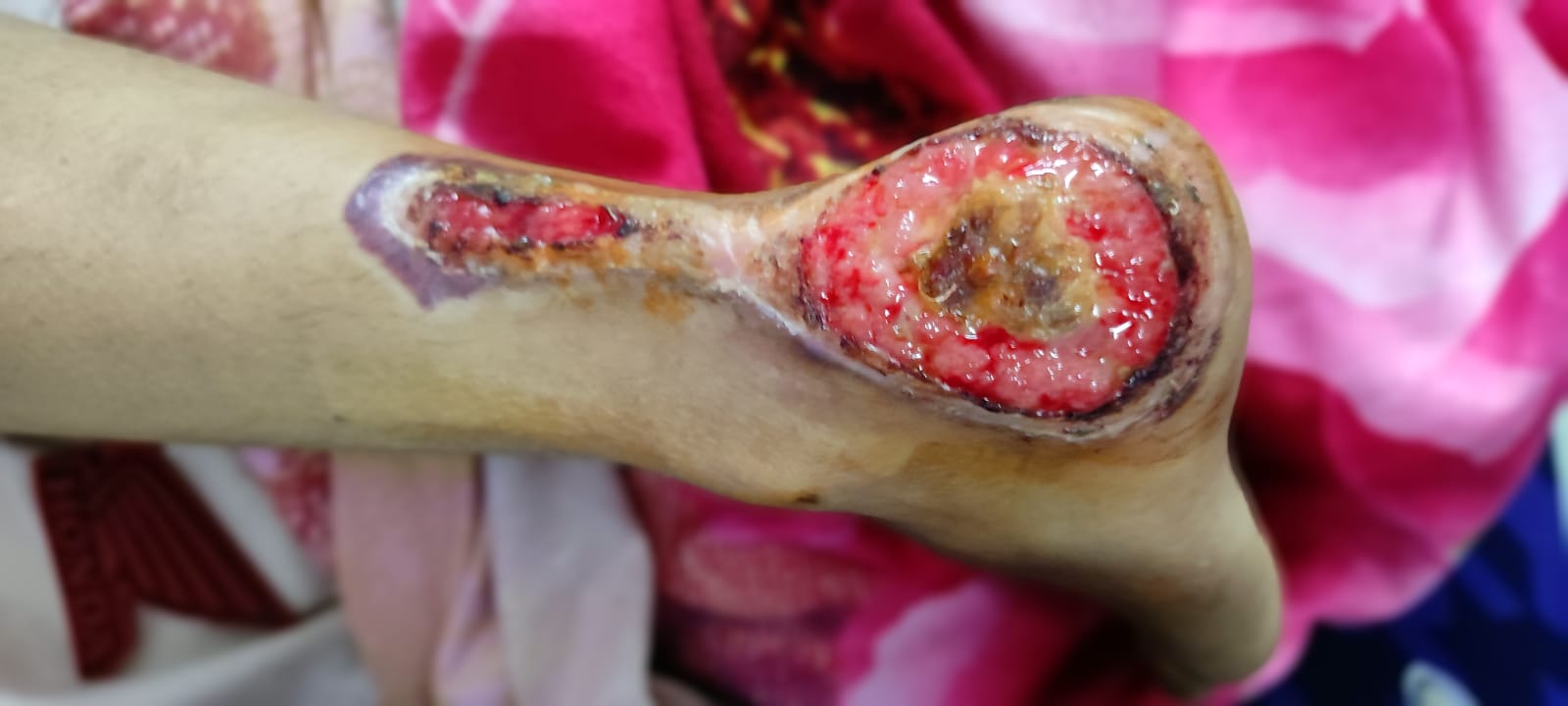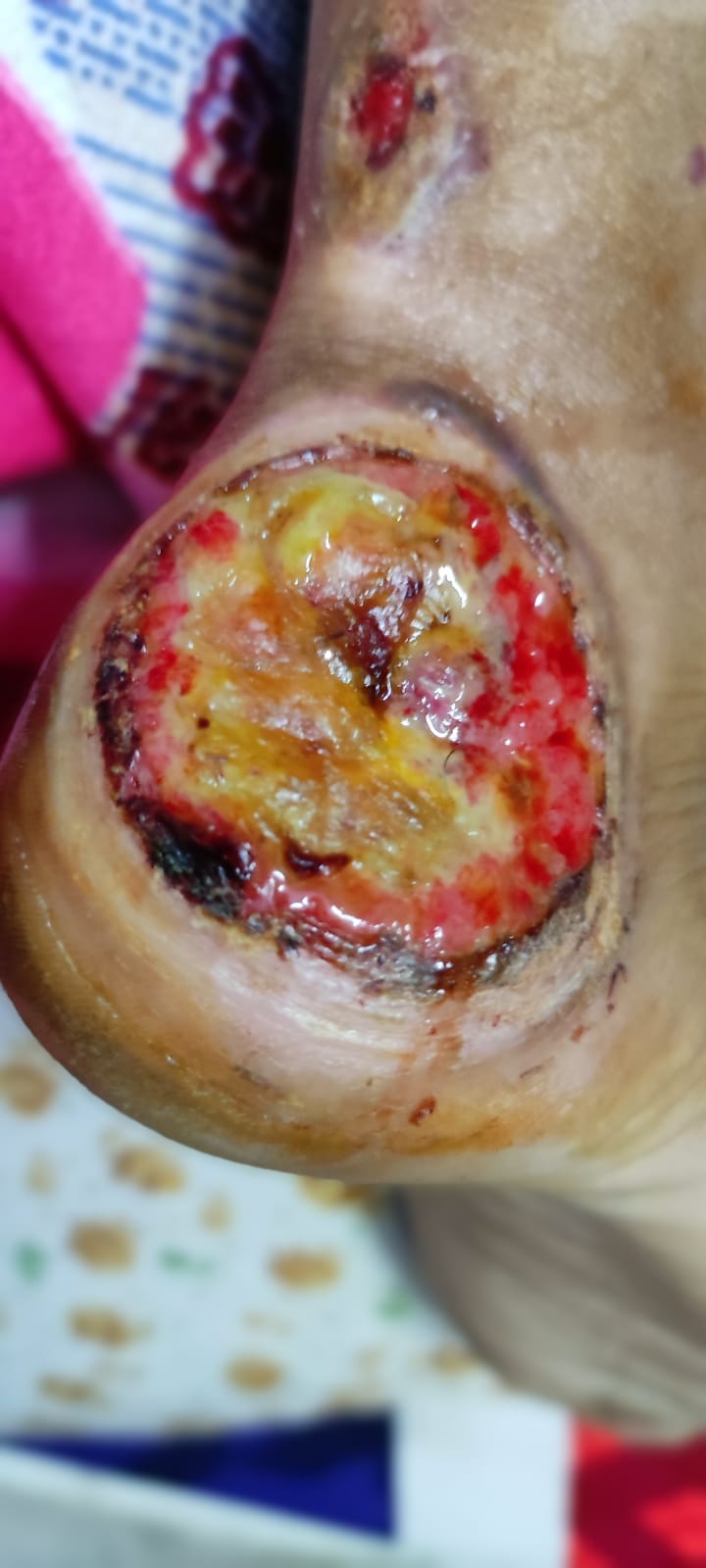Challenges and Complications in Electrosurgery during Laparoscopic Procedures: A Surgeon's Perspective
Laparoscopic surgery, also known as minimally invasive surgery, has revolutionized the field of surgery in recent decades. It offers numerous advantages to patients, including smaller incisions, reduced pain, faster recovery times, and shorter hospital stays. One essential component of laparoscopic surgery is electrosurgery, which involves the use of electrical energy to cut, coagulate, or dissect tissues. While electrosurgery is a valuable tool in the hands of skilled surgeons, it also presents unique challenges and potential complications. In this article, we will explore some of the key issues surgeons face when using electrosurgery during laparoscopic procedures.

Understanding Electrosurgery
Before delving into the challenges and complications, it's crucial to understand the basics of electrosurgery. Electrosurgical units (ESUs) generate electrical currents that are used to perform various tasks in surgery. These tasks include cutting tissue (electrosection), coagulating blood vessels (electrocoagulation), and dissecting tissue (electrodessication). The key components of electrosurgery include the active electrode, the patient return electrode (often referred to as the grounding pad), and the ESU itself.
Insulation Failure of Laparoscopic Instruments: Risks and Consequences in Surgery
Laparoscopic surgery, often referred to as minimally invasive surgery, has emerged as a preferred choice for many surgical procedures due to its numerous benefits for patients. It involves the use of specialized instruments, including electrosurgical devices, to perform intricate tasks within the body through small incisions. While the advantages of laparoscopic surgery are clear, there exists a potential risk that demands attention: insulation failure of laparoscopic instruments. In this article, we explore what insulation failure is, the risks it poses, and the potential injuries it can cause during surgery.
Understanding Insulation Failure
Insulation failure in laparoscopic instruments occurs when the protective covering or insulation surrounding the instrument's electrical components becomes compromised. These instruments often use electrical energy for cutting, coagulating, or dissecting tissues. The insulation serves as a critical barrier to prevent unintended electrical contact between the instrument and the patient's tissues. Insulation failure can result from various factors, including wear and tear, manufacturing defects, or improper handling.
Risks Posed by Insulation Failure
When the insulation of laparoscopic instruments fails, it can lead to several significant risks during surgery:
-
Electrical Burns: One of the most immediate risks is electrical burns. Unintended electrical contact between the instrument and the patient's tissues can result in burns, which can vary in severity depending on the level of electrical energy involved. These burns can cause additional pain, complications, and extended recovery times for the patient.
-
Tissue Damage: Insulation failure may lead to damage to delicate tissues and organs within the body. This damage can disrupt the surgical procedure and may necessitate additional corrective actions or surgeries.
-
Infection Risk: Damaged instruments can pose an increased risk of infection. The breach in insulation may provide a pathway for pathogens to enter the patient's body, potentially leading to post-operative infections.
-
Surgical Complications: Insulation failure can introduce unexpected complications during surgery, disrupting the surgeon's workflow and potentially leading to longer operating times.
Injuries Created During Surgery Due to Insulation Failure
The injuries created during surgery as a result of insulation failure can vary in severity, depending on factors such as the type of surgery, the location of the procedure, and the extent of the insulation failure. Some common injuries that can occur include:
-
Burns: Electrical burns on the patient's tissues at the site of contact with the compromised instrument.
-
Tissue Perforation: Sharp instrument tips can puncture tissues, leading to perforations that may require immediate attention.
-
Organ Damage: Insulation failure can result in damage to nearby organs or structures, potentially leading to complications that require additional surgical interventions.
-
Delayed Healing: Surgical complications stemming from insulation failure can impede tissue healing, prolonging the patient's recovery time.
-
Post-operative Pain and Discomfort: Patients may experience increased pain and discomfort following surgery due to injuries caused by insulation failure.
Preventing Insulation Failure
To prevent insulation failure during laparoscopic surgery, surgeons and medical professionals must prioritize the following:
-
Instrument Maintenance: Regular inspections and quality control checks on laparoscopic instruments to identify and address potential insulation issues.
-
Proper Handling: Ensuring that instruments are handled correctly, stored appropriately, and used according to manufacturer guidelines.
-
Staff Training: Adequate training for operating room personnel on instrument maintenance and safety protocols.
-
Adherence to Safety Protocols: Strict adherence to safety protocols, including maintaining a safe distance between instruments and tissues, especially when electrosurgery is involved.
Insulation failure of laparoscopic instruments is a critical issue that can lead to injuries and complications during surgery. Surgeons and healthcare professionals must be vigilant in addressing and preventing insulation failure to ensure the safety and well-being of their patients. Proper training, instrument maintenance, and adherence to safety guidelines are essential in minimizing the risks associated with insulation failure and providing the best possible outcomes for patients undergoing laparoscopic procedures.
Understanding Direct Coupling Insulation Failure and Capacitive Coupling in Laparoscopic Surgery
Laparoscopic surgery has transformed the landscape of surgical procedures, offering patients less invasive options with reduced pain, shorter recovery times, and smaller incisions. This minimally invasive approach relies heavily on various electronic instruments, including electrosurgical units (ESUs), which utilize electrical energy for cutting, coagulating, and dissecting tissues. However, with the benefits of laparoscopic surgery also come specific challenges related to electrical safety, such as direct coupling insulation failure and capacitive coupling. In this article, we will delve into these two critical aspects of laparoscopic surgery and their implications for both surgeons and patients.
Direct Coupling Insulation Failure
Direct coupling insulation failure is a concern primarily related to electrosurgical instruments and their electrical safety. It occurs when there is a breach in the insulation of the surgical instrument, leading to unintended electrical contact between the instrument and the patient's tissues. This can result from wear and tear, manufacturing defects, or improper handling of the instruments. The consequences of direct coupling insulation failure can be severe and may include:
-
Electrical Burns: When the instrument's insulation fails, electrical current can flow directly into the patient's tissues, potentially causing burns. This can lead to additional surgical complications, pain, and extended recovery times.
-
Tissue Damage: Unintended electrical contact can damage delicate tissues and organs, leading to complications that may require further surgical interventions.
-
Infection Risk: Damaged instruments can also pose a risk of infection as the breach in insulation may provide a pathway for pathogens to enter the patient's body.
To mitigate the risk of direct coupling insulation failure, surgeons and operating room staff must follow strict protocols for instrument handling and maintenance. Regular inspections and quality control checks on electrosurgical instruments are essential to identify potential issues before they lead to complications during surgery.
Capacitive Coupling
Capacitive coupling is another electrical safety concern in laparoscopic surgery, albeit less widely discussed than direct coupling insulation failure. It occurs when an electrical field is formed between an energized instrument and adjacent tissues, even without direct contact. This phenomenon is a result of the capacitance between the instrument and the surrounding tissue. The implications of capacitive coupling include:
-
Unintended Energy Transfer: The electrical field generated by the energized instrument can induce an electrical current in nearby tissues, potentially causing thermal injury or interference with nearby vital structures.
-
Tissue Damage: The energy transferred through capacitive coupling can result in tissue damage, which may not be immediately apparent during surgery but could lead to post-operative complications.
-
Safety Risks: Surgeons and operating room personnel need to be aware of the potential for capacitive coupling and take precautions to minimize its effects.
To reduce the risk of capacitive coupling, surgeons can employ techniques such as maintaining a safe distance between the energized instrument and surrounding tissues, using proper instrument insulation, and choosing the appropriate power settings on electrosurgical units.
Direct coupling insulation failure and capacitive coupling are two electrical safety concerns that surgeons and medical professionals in Gurugram and around the world must consider when performing laparoscopic surgery. While the benefits of minimally invasive procedures are significant, they come with the responsibility of understanding and mitigating these risks. Proper training, instrument maintenance, and adherence to safety protocols are crucial in ensuring the best outcomes for patients undergoing laparoscopic surgery. By addressing these electrical safety concerns, surgeons can continue to provide safe and effective minimally invasive procedures for their patients.

Challenges in Electrosurgery during Laparoscopy
-
Limited Space and Visualization: One of the primary challenges in laparoscopic surgery is the limited space and restricted field of vision. Surgeons must maneuver long, slender instruments through small incisions, which can make precise control of electrosurgical devices more challenging.
-
Risk of Thermal Injury: Electrosurgery relies on the generation of heat to cut or coagulate tissue. However, this heat can inadvertently spread to adjacent structures, potentially causing thermal injury to organs or tissues that are not the target. Surgeons must be vigilant to avoid unintentional damage.
-
Smoke and Plume: Electrosurgery generates smoke and surgical plume, which can obscure the surgeon's view. This can be especially problematic during laparoscopic procedures, where maintaining a clear visual field is crucial. Adequate smoke evacuation systems are essential to address this issue.
-
Electromagnetic Interference: Laparoscopic equipment, including electrosurgical units, can produce electromagnetic interference that may affect other electronic devices in the operating room. Surgeons and operating room staff must be mindful of this potential interference.
Complications of Electrosurgery

-
Bleeding and Hemorrhage: While electrosurgery is used to coagulate blood vessels, inadequate coagulation or unintentional injury to vessels can lead to bleeding and hemorrhage. Surgeons must be skilled at identifying and controlling bleeding promptly.
-
Tissue Injury: As mentioned earlier, thermal injury to adjacent tissues is a significant concern. Surgeons must exercise caution and precision to avoid damaging critical structures near the surgical site.
-
Electrical Burns: Misuse or malfunction of electrosurgical equipment can result in electrical burns, both on the patient's skin and internally. Proper training and adherence to safety protocols are essential to prevent such incidents.
-
Inadvertent Energy Spread: Surgeons must be aware of the potential for electrosurgical energy to spread beyond the intended area of treatment. This can lead to unintended tissue damage or complications.
-
Delayed Healing: Excessive use of electrosurgery can impair tissue healing and delay the patient's recovery. Balancing the benefits of electrosurgery with the potential for delayed healing is a key consideration.
Conclusion
Electrosurgery is a valuable tool in laparoscopic surgery, but it comes with its own set of challenges and potential complications. Surgeons in Gurugram, like their counterparts worldwide, must be well-trained and experienced in the use of electrosurgical devices to minimize these risks. Additionally, ongoing advancements in laparoscopic technology and techniques continue to improve safety and outcomes in minimally invasive surgery. Surgeons must stay updated on the latest developments and best practices to ensure the best possible results for their patients.


